CAPITOL REEF (Day 22 - part 4)
I drove a short ways out to Panorama Point. There were indeed amazing views in all directions!

Driving out



Click for a larger view
Navajo Sandstone weathers into domes; Wingate Sandstone fractures to form sheer cliffs; and the Chinle Formations wears away into slopes.


The Henry Mountains in the distant background were formed between 24 and 28 million years ago when molten magma bushed up the overlying rock layers into a gigantic bulge. The magma never reached the surface though, like a volcano that never erupted. Erosion eventually exposed their igneous core. The range is named after Joseph Henry, a supporter and friend of explorer John Wesley Powell who led expeditions here in 1872.

A typical dome






I then took the dirt road to the Goosenecks Overlook.


Hmmm... what did they take away... and why??

If only signs like this helped!

It was a short walk to the canyon rim.

The view! The canyon walls are mostly Moenkopi Formation, muddy sediments from 225 million years ago.

Sulphur Creek
When Sulphur Creek was young, this area was just a low plain. The stream wandered freely, changing direction with each flood. Slowly the Waterpocket Fold began to warp upwards. The stream was suddenly trapped, unable to detour. Over time, it carved a deep trench through the layers of soft rock... its final course recorded in stone. 'Goosenecks' are turns so tight that their loops nearly meet one another.

The twisting bends of the creek (click for a larger view)

Sulphur Creek is also fed by seasonal streams from side canyons, probably during flooding.

This is clearly a waterfall at times.

This too.

The creek now flows 800 feet below the rim.
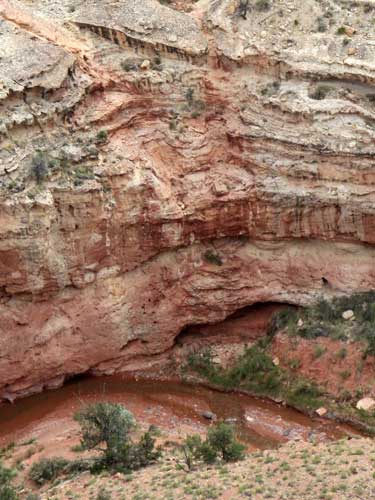
More evidence of seasonal waterfalls


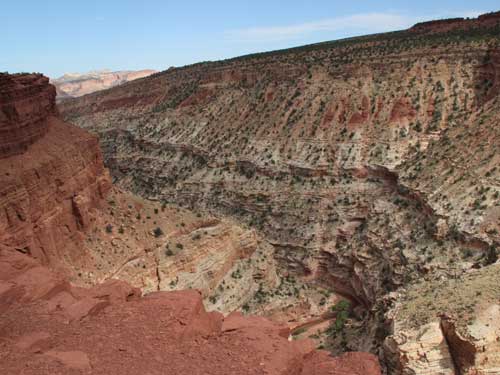
I then returned to the parking lot to catch the adjoining Sunset Point Trail.

The view heading back


While these look like someone threw down a handful of Cheerios, these are possibly fossils of crinoids or blastoids.
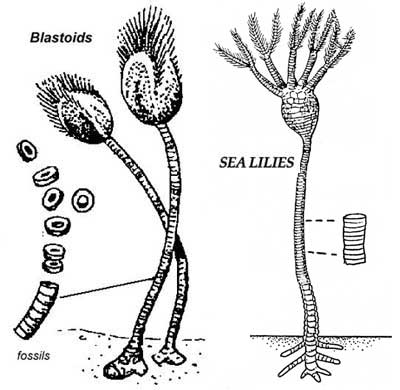
Crinoids (sea lilies) and blastoids (now extinct) belong to the group of stemmed echinoderms (other groups include starfish, sea urchins, sand dollars and sea cucumbers). When an organism died, its stem often fell apart, separating into individual disks which were then preserved.

More incredible textures!

Back at the trailhead
Sunset Point Trail wasn't very long, only 1/3 mile. Unfortunately the clouds had started moving in, dulling the vibrant colors of the rock drastically. Every now and then the sun could peek though, bringing the entire landscape alive.

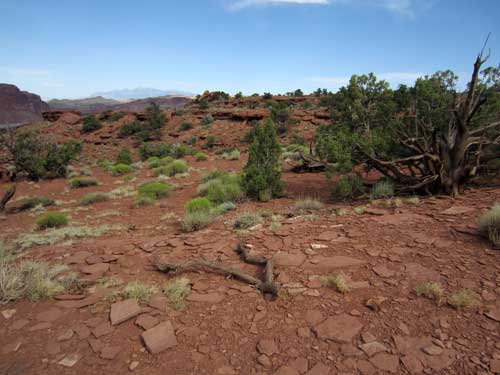


I had to assume these were from some kind of water erosion.
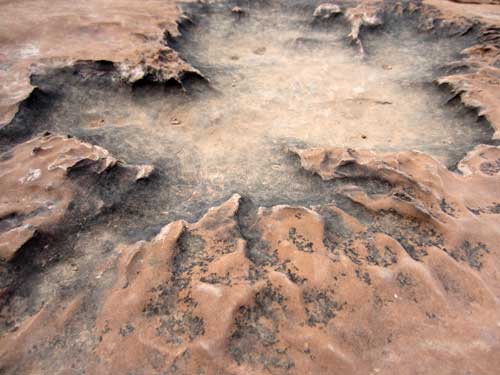
This could just as well have been a aerial photo of a massive canyon!

The end of the trail

So, this is what I wear when traveling in desert or exposed landscapes. I believe in keeping protected, especially when at higher elevations where there is less air to diffuse harmful rays. While on the Fremont River Trail, some Europeans wearing shorts took the opportunity to make fun of my sun-proof attire ("That's quite an outfit!"). However, at the Goosenecks Overlook, a young girl from Colorado said she liked my hat. I always find it interesting how one's culture influences how one sees things.... after all, my outfit hadn't changed.




I lingered a while until the clouds were so firmly entrenched that I had to give up my quest for color for the day.

Heading back
return • continue